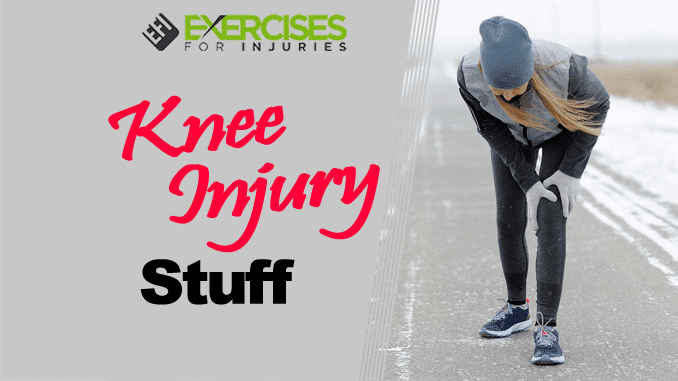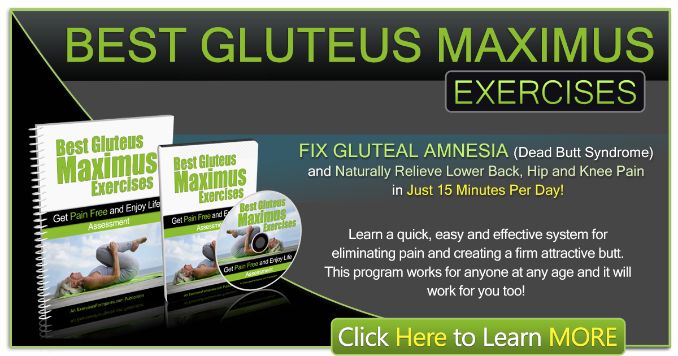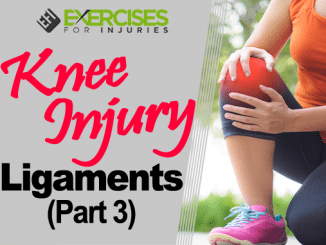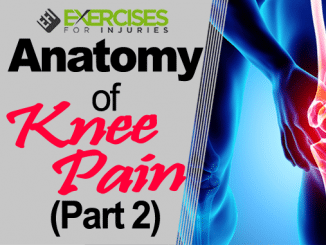
I have taken the afternoon to work on a presentation that I am doing for a group of group fitness instructors called Exercises to Strengthen and Prevent Knee Injuries.
It is a custom presentation that I am creating for the group.
I am getting more and more requests to do private fitness education for various types of fitness facilities. It is a wellness facility on Friday, and next week, it is a personal training studio.
Private Fitness Education for Fitness Facilities
CLICK HERE to watch the YouTube video.
While putting my presentation together, I wanted to share with you some of the cool things I found while looking at the research while preparing for the production.
Is Physical Activity Bad for Knee Joint Health?
There is an eternal debate if physical activity is good or bad for the knees. The researchers looked at things from the point of view that: physical activity is encouraged in school, but is this increase in physical activity leading to osteoarthritis?
What They Looked At:
They went back and looked at a lot of the research on physical activity and knee health.
What They Found:
- Strong evidence that physical activity leads to tibiofemoral osteophytes (bony outgrowth covered by fibrocartilage).
- Strong evidence was no decrease in knee cartilage based on radiological joint space narrowing.
So What?
This research challenges the belief that if we get our kids to exercise in school, we increase their risk of osteoarthritis.
We need to get kids moving because the benefits of doing so are much more significant than just improved knee joint health.
How to Target the Gluteus Maximus Better During the Lunge
What They Looked At:
They looked to see if trunk position (upper body) affected the muscles in the lower body during lunging. They got a group of 10 to perform an upright trunk forward (hip flexion) and trunk back (hip extension) lunge.
What They Found:
- Something About Gluteus Maximus – Performing the lunge with the trunk forward (hip flexion) leads to greater gluteus maximus activation.
So What?
We discussed the lunge earlier this week in this blog post, where the researchers showed that females have more excellent gluteus maximus activity when performing a lunge than men. If you need more muscle activation for your clients’ gluteus maximus, look at getting them to move the trunk forward.
How to Prevent Cartilage Damage and Osteoarthritis in the Knee
This was more of an opinion on preventing cartilage damage and osteoarthritis in the Knee.
It shows how one injury can lead to another damage, which is essential to remember.
They had some interesting observations:
- Articular cartilage has a difficult time healing and often progresses to osteoarthritis.
- Athletes are at greater risk of getting osteoarthritis compared to non-athlete.
- Those with osteoarthritis often report joint pain, decreased range of motion, and joint stiffness.
- Osteoarthritis may be diagnosed based on the symptoms and radiographic findings (narrowed joint space, osteophyte formation, and subchondral sclerosis).
- It is common for there to be little correlation between symptoms and radiographic findings in most injuries.
- Risk factors for osteoarthritis are excessive musculoskeletal loading (at work or in sports), obesity (based on high body mass index), previous knee injury, female gender, and muscle weakness around the Knee (quadriceps, hamstring).
- Young to middle-aged active athletes tend to suffer cartilage injuries.
- Cartilage injuries often predispose someone to osteoarthritis.
Well, that is it. Thanks for reading, and let me know what you think by leaving a comment.
Rick Kaselj, MS
Other articles related to knee injuries and knee pain:
If you are looking to improve the activation, endurance, and strength of your Gluteus Maximus, then check out “The Best Gluteus Maximus Exercise Program” here:




